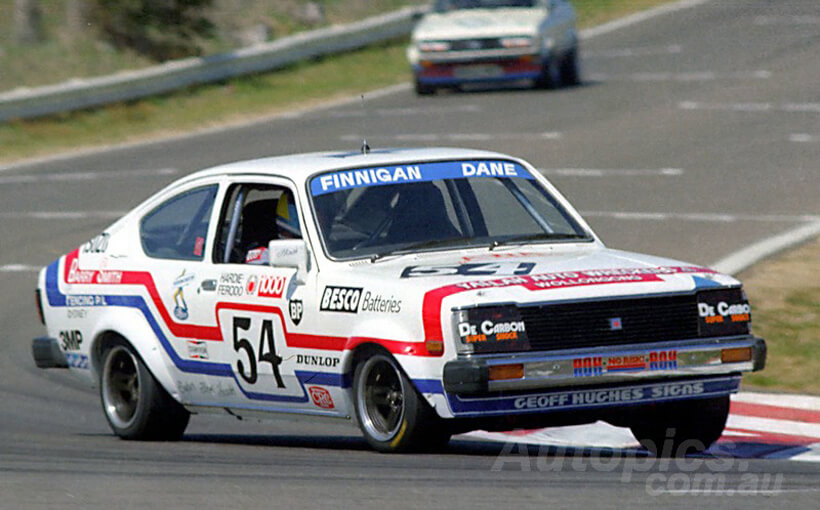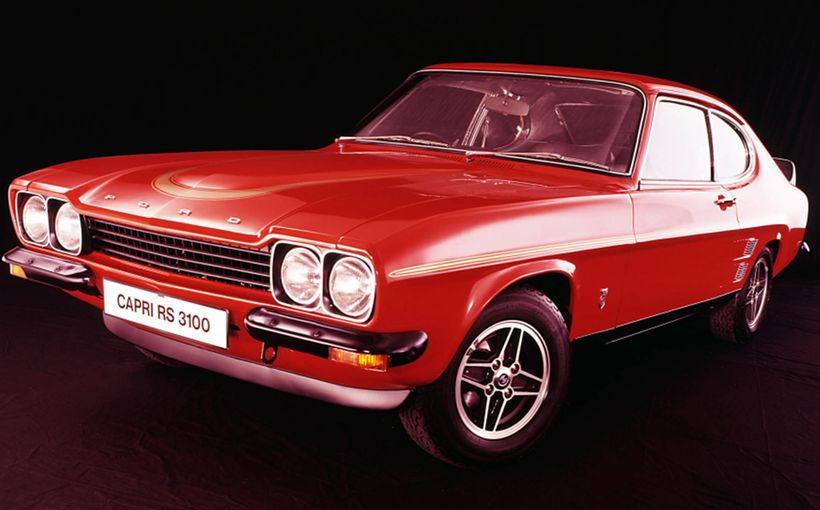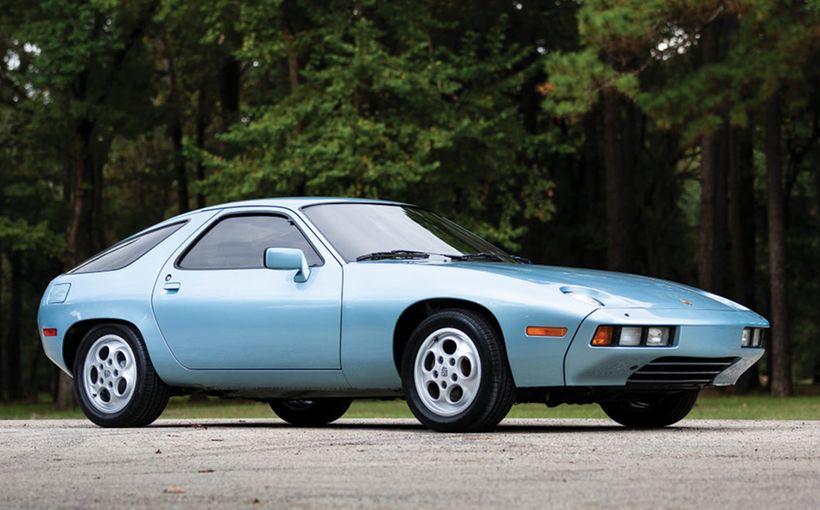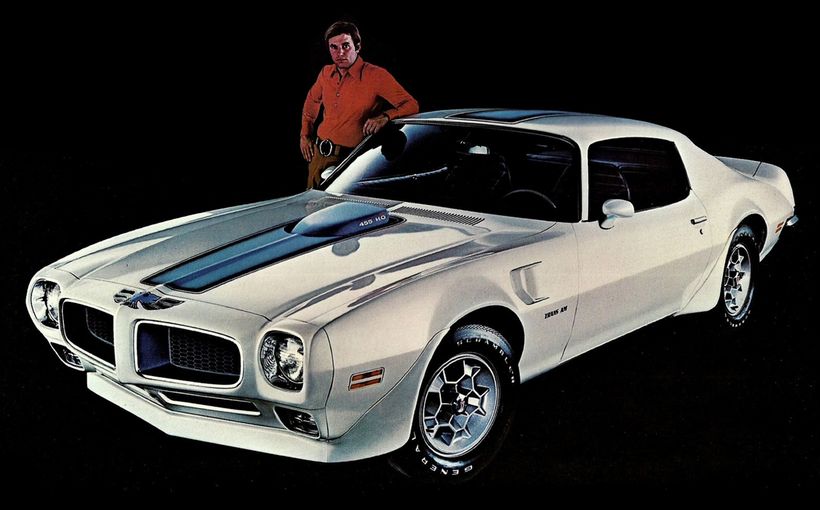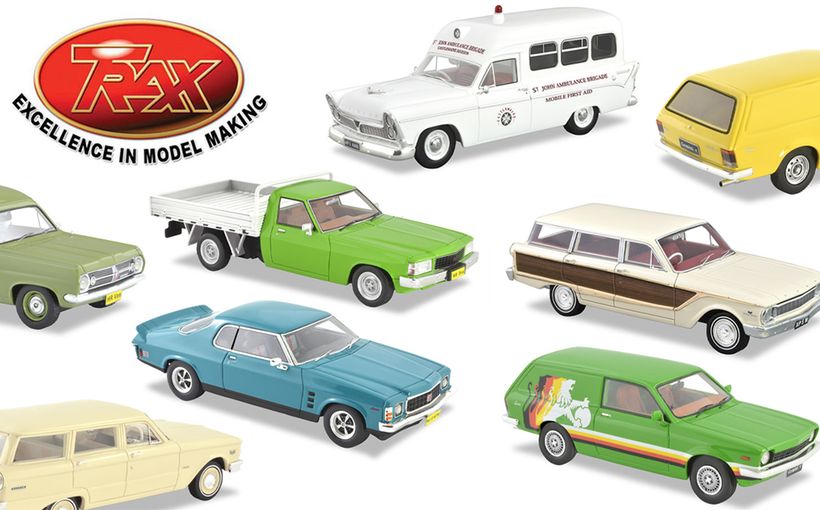Holden TE-TF-TG Gemini: The ‘Isuzu’ Bathurst Era

When Bathurst 1000 race organiser, the Australian Racing Drivers Club (ARDC), introduced a 0-1600cc class for the first time in 1979 the Holden Gemini dominated. It won again in 1980 only this time it was an Isuzu version sourced from Japan, heralding a change in marque loyalty by race teams which expanded to include the faster 1.8 litre ZZ/R version in the 2.0 litre class.
If the ARDC had been hoping for a rich variety in makes and models to embrace its new 1600cc category (Class D) in 1979, it would have been disappointed. If nothing else it appeared tailor-made for the vast number of low budget first generation (TX-TC-TD) Geminis competing in popular one-make series in Victoria and Queensland. Geminis hogged the 1979 entry list, with only a Corolla Levin, Ford Escort and VW Golf GTI to keep them company.
After the demonstrably faster twin-cam Corolla’s early demise the Geminis had Class D all to themselves and claimed the first five places, which was reduced to four when the runaway Gough brothers’ class winner was excluded after post-race technical checks.
The release of Holden’s new-look TE Gemini range in November 1979 was well timed given that motor sport governing body CAMS had introduced a revised set of Group C touring car rules for 1980. These were designed to usher in a new breed of tin-tops based on FIA Group 1 touring cars, with amendments to suit local requirements including Group 2-style front and rear spoilers and wheel arch flares to shroud racing tyres up to a 10-inch width.

Apart from a new diesel engine option, the TE Gemini carried over much of the previous generation’s chassis and mechanicals. However, it was the first to feature major sheet metal changes with bold new front and rear styling that gave the appearance of a larger car, including a sloping ‘chizel’ grille that forged a visual link with its larger Commodore cousin.
The Gemini coupe body style was also dropped and SL/X became the premium model grade. The resilient if increasingly strangled 1.6 litre SOHC four cylinder engine (161z) carried over with 50kW at 5400rpm and 110Nm at 3200rpm, breathing through a single twin-throat carburettor.
For Aussie touring car teams, the loss of the swoopy coupe body option from the local TE Gemini line-up prompted a shift away from the Holden badge to that of the Japanese Isuzu brand, which was then partly owned by GM anyway so it was, in effect, staying in the family.
This was entirely logical, too, as the Gemini was designed from the start as a ‘world car’ to be sold in numerous global markets under different badges including Holden, Isuzu, Chevrolet, Buick and Opel. Its FIA global recognition as a Group 1 sedan meant it could also compete in numerous countries, including Australia under its new-for-1980 Group C rules.

Isuzu also had a proud Bathurst heritage stretching back to 1965 when its much loved Bellett along with Toyota’s Corona became the first Japanese marques to compete in the annual 500-mile race.
So from 1980, although they looked like Holden TE Gemini sedans and coupes, most Bathurst entries were in fact ‘Isuzu Geminis’ sourced from Japan. They were either the PF50 model with the same 1.6 litre SOHC four (161z) as fitted to local Holden Geminis, or the exciting new PF60E ‘ZZ’ variant released late in 1979 powered by Isuzu’s larger and more powerful 1.8 litre electronic fuel-injected eight-valve DOHC four (G180w) rated at 90kW at 6400rpm.
The ZZ Isuzu Gemini (with ZZ/L, ZZ/R, ZZ/T, ZZ/E variants based on model years) was not sold in Australia and should not be confused with the oddly-named ZZ/Z special edition released by Holden which was merely a styling option based on the standard 1.6 litre TG Gemini.
It was hoped the fuel injected twin-cam ZZ had the right stuff needed to pose a genuine threat to Peter Williamson’s flying 2.0 litre twin-cam Toyota Celicas in the 2000cc division.

1980 Hardie-Ferodo 1000
Following Holden’s dominance of the new Class D in 1979, the ARDC should have been happier with the greater variety of starters for the 1980 race which included not only six Geminis but also a Mitsubishi Lancer, Alfasud, VW Golf GTI, Toyota Corolla Levin and two Ford Escort 1.6 GLs.
Creating considerable discussion was that two of the Geminis, the Jim Faneco/Peter Boston sedan and Gary Rowe/Geoff Wade coupe, were displaying large ‘CDT’ logos on their rear flanks which stood for ‘Country Dealer Team’.
The new company’s founder, Gemini racer Jim Faneco, had established CDT that year in Melbourne’s outer east along similar lines to Peter Brock’s equally new Holden Dealer Team or HDT Special Vehicles Pty Ltd in South Melbourne.
Brock had secured the backing of some major metropolitan dealers to ensure the survival of Holden’s famous race team following GM-H’s shock withdrawal from the sport. In return Brock would put his name to personally modified high performance Commodore V8 road cars, with premium pricing to ensure HDT dealers could generate enough profits to justify their support of the race team.

Outwardly CDT appeared to be based on a similar business model. The major differences were that Faneco had garnered the support of some regional Holden dealers that were not part of the HDT operation. And he would be enhancing the performance of Geminis rather than Commodores.
Like Brock, Faneco also planned to use his high performance road car operation as the manufacturing basis for homologation of high performance parts for racing, provided he could build his Gemini road cars in the minimum number required (500 units). However Faneco, like Brock, would soon discover that building and selling 500 cars was a big ask.
CDT’s first road car offering was based on the latest TE model Gemini in top shelf SL/X trim. This mirrored Brock’s choice of the premium SL/E Commodore as the basis of his HDT special. The CDT Gemini included uprated suspension, wider alloy wheels and lower profile tyres, sports steering wheel, extra instrumentation, spoilers and wheel arch flares, finished off with bold body striping and decals.
The CDT Gemini was available in two states of engine tune. The Stage One (S1) was a lightly modified street version of the local (161z) 1.6 litre SOHC four which proved a popular seller. The much hotter Stage Two (S2) was clearly designed with racing in mind, with a pair of big-breathing 40mm IDF Weber twin-choke carbs on a port-matched inlet manifold, reworked cylinder head, high lift camshaft, higher compression ratio and full blueprinting and balancing. The S2 also had much firmer suspension tuning designed for track use.

It was this higher level of modification for which CDT would be seeking race homologation, in the same way Brock was chasing approval to run his HDT road car’s Torana L34-type big valve heads and manifold on the track.
Of particular importance to Faneco was gaining approval to run twin carburettors on the 1.6 litre race cars, as their engine performance was restricted by having to run the standard inlet manifold with an adapter for a single two-barrel carburettor (Weber or similar) under Group C rules. CDT was also planning a Stage Three (S3) version equipped with a turbocharger.
However, what Faneco could not have foreseen was legal action in the form of an injunction taken out against him by HDT in the Supreme Court prior to the race. Brock wanted CDT to be legally restrained from using its logo, as he felt it looked too similar to the famous HDT version created in 1972. The judge adjourned proceedings until after the race and the CDT logos remained on the cars that weekend (but they were later redesigned to avoid any visual link with the HDT version).
Faneco also could not have foreseen that 1980 would be the second and last time that the 1600cc Class D would be run at Bathurst, thereby disrupting plans to benefit (in a marketing sense) from Gemini class wins on the Mountain in future. Building the minimum 500 CDT road cars required for homologation purposes would also prove to be an elusive target.

And, finally, Faneco also could not have expected that both his CDT Isuzu Geminis would end up crashing out of the 1980 race as a direct result of being hit by larger V8-powered cars. It was these two incidents that highlighted the growing speed difference between the fastest and slowest cars at Bathurst, which arguably hastened the demise of the 1600cc class.
From the start of a drama-filled day, the two fastest Class D cars of Chris Heyer/Peter Lander (Golf GTI) and Allan Gough/Col Spencer (Isuzu Gemini) were early pit visitors, shuffling the pecking order. Then on lap 12 the CDT Gemini coupe of Gary Rowe/Geoff Wade departed the race in dramatic fashion at Reid Park.
Peter Brock, storming through a slower pack of lapped cars in his HDT Commodore, could not avoid clipping the tail of the CDT coupe – ironically the same team Brock was taking legal action against! The Gemini tripped and rolled before coming to rest in a crumpled heap beside the track, fortunately without driver injury.
After about one-third distance, the Finnigan/Dane Isuzu Gemini coupe was leading from the Burrell/Shute Mitsubishi Lancer, the Surplice/Gates Corolla Levin and the Holden/Earle Escort. Then, incredibly, on lap 105 the second CDT car shared by Jim Faneco/Peter Boston was hit hard from behind by Kevin Bartlett’s brakeless Camaro, flipping the little sedan into another fearful roll-over and leaving the burgeoning CDT with two wrecked Geminis for its efforts.

The Finnigan/Dane entry took control of the class lead after the final stops, powering home to a convincing one-lap victory and back-to-back wins for the Gemini in Class D.
Also creating considerable interest in Class C (1601-2000cc) was the first appearance of an Isuzu Gemini ZZ/R sedan entered by Bathurst veterans Gary Leggatt and David Seldon. On paper the 1.8 litre twin-cam sedan and strong driving combination posed an outside threat to the well-established Celicas, Alfettas and Escorts.
However, things just didn’t come together at Bathurst. The freshly-built car did not record a qualifying time on Saturday and had to start the race from the rear of the huge 60-car grid. It lasted only 18 laps before retiring with fuel pump failure. However, there was always next year.

1981 James Hardie 1000
Re-naming of the race from Hardie-Ferodo to that of parent company James Hardie wasn’t the only major change for 1981. The classes were also rearranged, now for the first time based on engine cylinders. So Class A was for eight or more cylinders, Class B was for six cylinders and rotaries and Class C catered for four and five cylinders.
This brought howls of protest from the former Class D competitors who suddenly had a snowflake’s chance in hell of getting a class win. The Gemini racers and their 1.6 litre rivals found themselves thrown in with not only much faster 2.0 litre cars like the Toyota Celica, Alfetta GTV and Escort RS2000 but also a pair of Isuzu Gemini ZZ/Rs for David Seldon/Gary Rowe and an HDT Special Vehicles-prepared version for Phil Brock/Gary Scott.
The 2.0 litre teams were also unhappy, as they saw their odds of a class win lengthen with the inclusion of two new turbocharged Nissan Bluebird works entries. As there was no class catering solely for turbocharged cars, the 1.8 litre Bluebirds found themselves in the new Class C because of their four cylinder engines.
However, under the FIA’s turbo equivalency factor of 1.4 (1.8 litre x 1.4 = 2.52 litres) the Bluebirds were effectively 3.0 litre class cars under the previous class system. If they proved reliable, they would run away with the new Class C.

CAMS intervened prior to the race and insisted that the established classes of previous years (0-1600cc/1601-2000cc/2001-3000cc) be awarded within the new three-class structure - not that spectators or media knew any different. It was a meaningless, confusing and clumsy arrangement which, not surprisingly, only lasted for one year.
As expected with their turbo boost wound up the Bluebirds were very fast in qualifying but both succumbed to numerous technical problems in the race. That left the four/five cylinder class to the wickedly fast 2.0 litre Celica shared by Toyota dealers Peter Williamson and John Smith, which cleared out to a demoralising four-lap victory ahead of the Gary Leggatt/Phil McDonald 2.0 litre Alfetta GTV.
In third place and first 1600cc car home (albeit eight laps behind the winning Celica) was the shiny black CDT-entered Isuzu coupe shared by Allan Gough and Jim Faneco after an impressive trouble-free drive that downed many larger-engined rivals.

Unfortunately these included the two ZZ/R Geminis. The promising Brock/Scott sedan ran as high as third before being forced out with diff failure after only 36 laps. The Seldon/Rowe ZZ/R, which had impressed in the 3.5 litre series at Amaroo Park that year in the hands of both Bob Morris and David Seldon, had a troubled race which ended with substantial damage from the multi-car wreck on top of the Mountain.
On reflection the light and agile Gemini ZZ/R was a car with considerable potential in the 2.0 litre class, which remained largely untapped due to a variety of factors. A complete absence of factory backing was one, compared to the considerable financial and technical support Peter Williamson enjoyed through Toyota (both locally and in Japan) with his successful twin-cam Celica GT program (which like the ZZ was a model not sold in Australia).
Another issue was that the ZZ/R’s G180w 1.8 litre DOHC four was available only with a complex electronic fuel injection (EFI) system at a time when today’s aftermarket electronic engine management systems and tuning software were still light years away.
However, as the ZZ was only available with fuel injection, local teams had to come up with an alternative based on a Lucas mechanical system used in a variety of UK road cars including the Triumph 2.5PI. It was reportedly not ideal for this application and if a simpler twin-Weber carburettor option had been homologated at the time, it would have performed much better.

Bathurst post-1981: Small Cars Not Welcome Here
The one obvious seismic shift in the Bathurst 1000 class structures after 1980 was that race organiser, the ARDC, could not see a Group C future for sub-1600cc cars on the Mountain.
If the four/five cylinder class introduced in 1981 wasn’t enough of a cold shoulder for Gemini racers, the introduction of an even simpler two-class structure for 1982 (Class A - Over 3000cc and Class B - Under 3000cc) made it abundantly clear.
Not surprisingly, only one Isuzu Gemini coupe was entered for the 1982 Bathurst 1000 with the same driving combination of Jim Faneco/Allan Gough which had been the highest-placed 1600cc crew the previous year. However, with a down-on-power engine they were not able to repeat that feat in 1982, being classified as non-finishers due to insufficient laps being completed.

The final appearance by a Group C Gemini at Bathurst was in 1983 under the same two-class structure. A lone Isuzu ZZ/R shared by John White/Burnie McClure finally showed some much needed reliability to finish fourth in the Under-3.0 litre division (Class B) but it was trounced by faster Ford Capri, Alfa GTV6 and Audi 5+5 rivals.
After Australia’s switch to international Group A touring car rules in 1985, ZZ/R Geminis in the hands of John White, Darryl Hendricks and David Sala continued to be seen in rounds of the Australian Touring Car Championship in 1986-87 before the Holden/Isuzu Gemini era in Aussie touring car racing came to an end.
With two Bathurst class wins to its credit (1979-80) it was certainly a competitive and successful car. However had CDT’s exciting homologation plans come to fruition and had GM-H shown any interest in supporting the small car classes, the little Gemini could have achieved so much more.
*Special thanks to Paul Sabin for his valuable assistance with this article.

